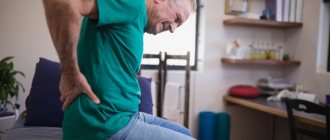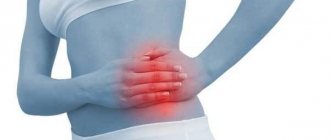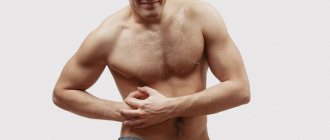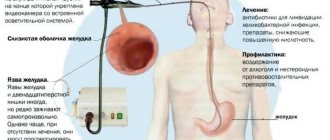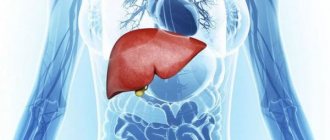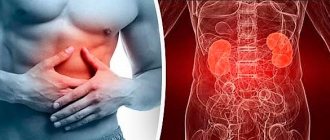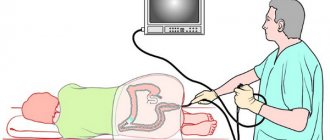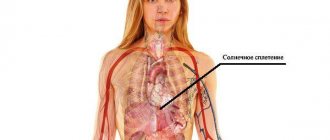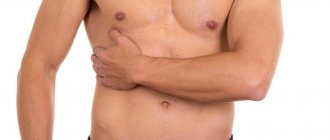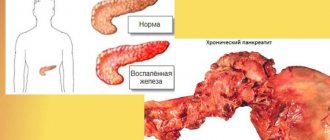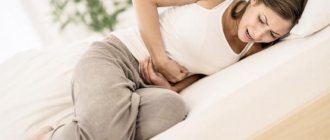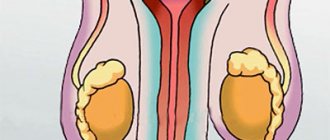Pain in the left side from the back is a symptom that is characterized by pain in the back and on the left side. Such a clinical sign may be a consequence of both a gastroenterological disease and other diseases. Most often this is the urinary system and the cardiovascular system. The symptomatic nature of pain on the left side and in the lower back is also not excluded.
- Etiology
- Symptoms
- Diagnostics
- Treatment
The nature of the symptoms will depend on the underlying factor. Most often, a painful sensation in the left side from the back is accompanied by the same unpleasant sensations in the area above the lower back, lower and upper extremities, and abdomen. Only a doctor can determine exactly what exactly led to the manifestation of such a clinical picture, so if you have such a symptom, you should immediately seek medical help.
The diagnostic program includes both laboratory and instrumental diagnostic methods, the list of which is determined after a physical examination of the patient by a doctor.
The prognosis will be individual, however, the earlier treatment is started, the lower the risk of complications. It is not recommended to carry out therapeutic measures at your own discretion.
Etiology
Pain in the left side from the back can be caused by etiological factors such as:
- gastritis;
- stomach ulcer;
- nonspecific ulcerative colitis;
- functional dyspepsia;
- digestive system disorder;
- enlarged spleen.
In addition, pain in the left side behind may indicate the development of pathological processes in the urolithiasis system, namely:
- pyelonephritis;
- glomerulonephritis;
- renal colic;
- benign or malignant tumors in the kidneys;
- hydronephrosis;
- kidney tuberculosis;
- kidney cyst;
- nephroptosis.
Nephroptosis
Also, a painful sensation in the lower back can be in the nature of physiological pain - during pregnancy or during the onset of the menstrual cycle. In such cases, there is aching pain, often radiating to the lower back.
In addition to certain pathological processes, we should not forget that the left side behind hurts after excessive physical exertion, injuries, or operations. Therefore, you should not compare the current symptoms and carry out treatment on your own. Only a doctor can do this and only after making a diagnosis.
Causes and probable diseases
Painful sensations in the lower back can be “stabbing”, “pulling”, occur with a sudden change in body position, or have a constant “aching” character.
The most common factors contributing to pain include:
- Stretching of muscle structures;
- Back injuries;
- Destructive processes occurring in the spine due to metabolic disorders (age factor, unhealthy lifestyle).
But there are also diseases in which irradiation of painful sensations occurs in neighboring sections.
Respiratory diseases
Pulmonary tuberculosis . Caused by an infection called Koch's bacillus. By reducing the body's immunity, bacteria penetrate the bronchioles, causing an inflammatory process. As a rule, at the initial stage of development, tuberculosis does not manifest itself and “hides” under colds.
Symptoms:
- Frequent or long-term “dry” cough;
- Increased sweating;
- Fast fatiguability;
- Dyspnea;
- Chest pain;
- Feverish state (fever, paleness or redness of the skin, dizziness).
The development of tuberculosis affects the cardiovascular and endocrine systems, the kidneys, manifesting itself as painful sensations in these departments.
Lungs' cancer . Oncological damage can make itself felt in different parts of the body, pain can appear in different parts of the back, in the shoulders. Cancer pain occurs in stages 2 and 3.
Symptoms:
- A wheezing or whistling sound in the lungs when breathing;
- There are “pressing” pains in the chest that are not associated with coughing;
- Sudden weight loss for unknown reasons;
- Problems with swallowing food;
- Expectoration mixed with blood.
Cardiovascular pathologies
Heart attack . Heart attack occurs when there is insufficient blood supply to the organ. The causes of blockage of blood vessels are: alcohol consumption, smoking, diabetes, obesity. The condition of the heart is also affected by stress resistance, genetic predisposition, age-related changes, and lack of an active lifestyle.
Symptoms of myocardial infarction:
- intensity of chest pain;
- pain is felt in the left arm (numbness, tingling), radiates to the back, and can occur in the stomach area;
- Pallor of the skin;
- Lack of air, suffocation (may occur due to fear);
- Increased heart rate;
- Cold sweat.
Diseases of the gastrointestinal tract
Gastritis . Inflammatory process of the gastric mucosa. Often severe pain in the advanced stage of the disease manifests itself in the lumbar region. Causes of gastritis: infections, specific antibodies, exposure to chemicals on the stomach, constant stress, poor diet.
Symptoms:
- “Sharp” pain on an empty stomach or immediately after eating;
- Lack of appetite;
- Irritability;
- Abnormal bowel movements (constipation, diarrhea);
- Nausea;
- Dizziness;
- The pain may be girdling in nature.
Cholecystitis . The process of inflammation of the walls and neck of the gallbladder, which leads to disruption of bile secretion with subsequent changes in digestive function. The appearance of cholecystitis is facilitated by: infections from other internal organs, disruption of the endocrine system, helminthiasis and giardiasis.
Symptoms: in the absence of a stimulus (changes in eating behavior, stress, physical activity), cholecystitis does not manifest itself; at the acute stage, a “dull” pain occurs on the right side, which can radiate to the lumbar region. Abnormal bowel movements, nausea, and, in rare cases, vomiting of bile are noted.
Problems of internal organs
Pathologies of the spleen. Pathological processes in the spleen rarely occur on their own. Factors contributing to problems with the spleen: formation of cysts, intrauterine disorders, tumor infections, disturbances in the blood supply to the organ.
Symptoms:
- Impaired memory processes;
- Increased body temperature;
- Tachycardia.
Often, when the spleen is damaged, the liver or kidneys begin to hurt.
Urolithiasis (urolithiasis). The disease is characterized by the formation of stones in the kidneys and urinary tract. The causes are chronic gastritis, a sedentary lifestyle, a lack of certain microelements, and poor nutrition leading to metabolic disorders.
Symptoms:
- Feeling of strong “pressing” pain in the lumbar region;
- General weakness;
- Renal colic.
The development of such ailments as pyelonephritis, hematuria, pyuria, and anuria is likely.
Defects of the musculoskeletal corset
Osteoporosis . A progressive age-related disease that leads to changes in the structure of bones (a decrease in their mass and a decrease in strength). Other factors in the occurrence of osteoporosis are genetic predisposition, prolonged breastfeeding, abuse of drinks and food that wash away calcium and other important microelements, kidney failure, and a sedentary lifestyle.
Symptoms: severe pain in the thoracic and lumbar spine, changes in posture, decreased height.
Intervertebral hernia . A hernia is most often formed as a result of the development of osteochondrosis, representing a protrusion of the intervertebral disc between the vertebrae.
When a hernia forms in the lumbar spine, severe “sharp” pain occurs on one side of the lower back, and over time (depending on the stage of development of the disease) can radiate to the leg, causing severe pain and numbness of the lower extremities, and muscle tension on the affected area. Pain in the back becomes worse when coughing or sneezing, and urination becomes difficult over time.
A hernia leads to dysfunction of the reproductive organs (impotence, infertility), pinching of the sciatic nerve, and disability of the patient (paralysis of both legs).
Symptoms
If aching pain from the back in the left side is caused by gastroenterological diseases, then the clinical picture will be characterized as follows:
- nausea, which is accompanied by vomiting, which does not always bring relief;
- heartburn;
- increased flatulence, bloating;
- prolonged, repeated diarrhea, which will indicate colitis;
- blood may be present in the stool;
- abdominal pain, which most often occurs after eating ("hunger pain" can also occur - an unpleasant sensation in the epigastric area occurs if a person does not eat anything for more than 2 hours, the pain goes away immediately after eating);
- loss of appetite, against the background of which body weight may sharply decrease;
- pain in the left hypochondrium, which radiates to the gluteal muscles and lower extremities;
- a feeling of fullness in the stomach even with a minimal amount of food consumed.
If the pain in the left side radiates to the back and is felt even in the lower back and groin area, this may well be a sign of a disease in the genitourinary system. In this case, the clinical picture will be characterized as follows:
- frequent urination, which may be accompanied by burning and itching, does not always bring relief;
- nagging pain in the lower abdomen;
- menstrual irregularities in women;
- unpleasant painful sensations during sexual intercourse;
- general deterioration of health.
In general, pain on the left side, which radiates to the entire back, is a fairly common symptom in many diseases, so the clinical picture that accompanies this symptom is nonspecific. It is impossible to determine the etiological factor without diagnosis, so you need to consult a doctor as soon as possible.
Prevention of back pain
Diseases can be prevented by maintaining a healthy lifestyle, giving up alcohol and cigarettes, increasing sleep and paying attention to physical activity. An important factor in preventing pain is correct posture and even distribution of the load. Therefore, when working at a computer, it is necessary to ensure correct posture: the lower back should be pressed tightly against the back of the chair (chair), the legs should be located next to the blades of the chair.
When lifting heavy objects, such as grocery bags, it is recommended to first squat down and only then pick up the bags, distributing them evenly in both hands.
Regardless of the intensity and duration of painful manifestations, it is necessary to seek advice from a treating specialist, undergo a comprehensive examination and prescribed treatment. In case of acute pain accompanied by other clinical manifestations, you should call an ambulance. Any delay in the event of severe pain symptoms can cost the patient’s life.
Diagnostics
In this case, you may need to consult the following specialists:
- gastroenterologist;
- nephrologist;
- gynecologist;
- oncologist.
The diagnostic program consists of the following activities:
- general and biochemical blood test;
- general urine analysis;
- general stool analysis;
- test for tumor markers if there is a suspicion of cancer;
- Ultrasound of internal organs;
- MRI of the kidneys;
- Ultrasound of the abdominal cavity;
- endoscopic examination of the gastrointestinal tract.
Endoscopic examination of the gastrointestinal tract
Based on the diagnostic results, the doctor will determine the cause of this clinical sign and prescribe treatment - conservative or radical.
Pain relief
When the left back hurts in the lumbar region due to musculoskeletal pathology, NSAIDs can relieve the discomfort.
- Intramuscular injections of Diclofenac in an individual dosage 1 time/day for no longer than 4 days;
- Take 1 tablet of Ibuprofen/Nurofen up to 3 times a day;
- Applying ointment (Nise, Diclofenac) to the painful area up to 4 times a day;
- Single dose of 1 analgesic tablet (Analgin);
- A single intramuscular injection of an analgesic (Baralgin) in an individual dosage.
The simplest and safest way is to take NSAIDs in tablets.
Treatment
The course of basic therapy is determined based on the diagnosis. If the cause is a gastroenterological disease, then drug therapy and diet are selected.
For neuralgic nature and diseases of the musculoskeletal system, treatment can be based on the following methods:
- taking medications;
- physiotherapeutic procedures;
- physiotherapy;
- massage, manual therapy.
If the clinical sign is oncological, radical treatment methods are used: surgery, chemotherapy and radiation therapy, followed by a rehabilitation period.
Unfortunately, in this case it is impossible to highlight a list of specific methods of prevention, since this is a symptom and not an independent pathological process. You can reduce the risk of pain if you follow the rules of a healthy lifestyle and prevent those diseases that are included in the etiological list. You also need to regularly undergo a preventive medical examination.
Which doctor should I contact?
Doctors who can help with the treatment and diagnosis of left back pain:
- therapist;
- cardiologist;
- neurologist;
- pulmonologist;
- gastroenterologist;
- traumatologist;
- endocrinologist;
- urologist;
- nutritionist.
If a person cannot independently determine the location of pain, then he should start with a general practitioner. He will be able to conduct an initial examination and refer the patient to the specialist who is most likely to be able to make the correct diagnosis.
If the left upper back hurts , then this is most likely to be a heart problem, then one of the first things you should visit is a cardiologist. Heart problems most often lead to death, so if you have such symptoms, it’s better not to hesitate.
If the lower back hurts , then most likely it is a problem with the abdominal organs, and then the diagnosis and treatment will be made by a gastroenterologist.
In addition to treatment, lifestyle adjustments may be required in the future; diet changes are often recommended.
For these reasons, treatment by one specialist may entail observation by several at once. Do not neglect the advice of a doctor or refuse his recommendations even after recovery.
